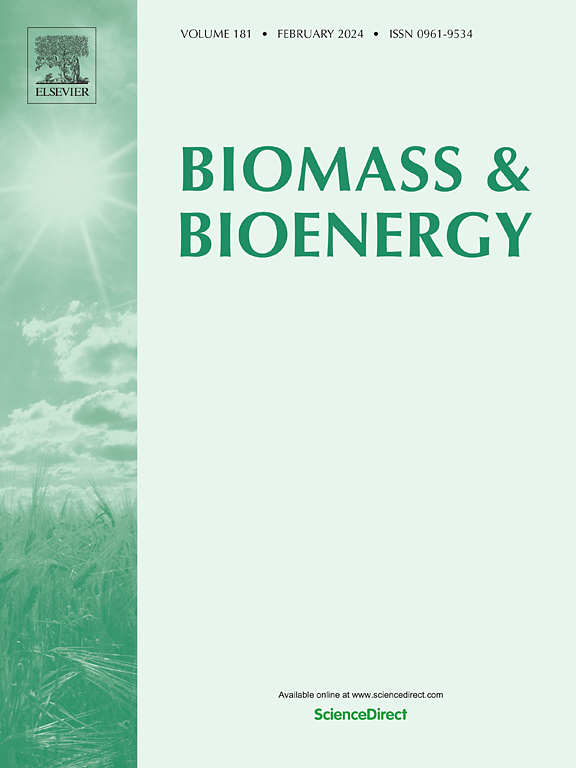Advancing marine cellulose-based packaging: A review on sustainable biorefinery perspectives
IF 5.8
2区 生物学
Q1 AGRICULTURAL ENGINEERING
引用次数: 0
Abstract
The growing environmental effect of traditional plastic packaging has caused a growing search for sustainable alternatives, and cellulose has emerged as an attractive option due to its mechanical strength, biodegradability, and renewable nature. Marine-derived cellulose from algae, mangroves, and marine sediments remains poorly understood despite its unique structural and functional advantages, whereas a significant amount of research has been conducted on terrestrial cellulose sources including plants and agricultural waste. This review emphasizes marine cellulose's potential for biodegradable and functional food packaging applications through examining its biological origins, isolation techniques, and physicochemical characteristics. The increased moisture resistance, biodegradability, and flexibility of marine-derived cellulose are highlighted in compared to terrestrial cellulose, making it an excellent option for sustainable packaging. It remains a number of challenges to be resolved, such as low extraction efficiency, expensive processing, and inconsistent physicochemical characteristics. Unlocking the full potential of marine cellulose requires addressing these technical and financial obstacles through scalability studies, material functionalization, and green extraction techniques. This review provides a comprehensive evaluation of marine cellulose as an alternative packaging material and identifies key research gaps and future directions. By bridging the knowledge gap in marine cellulose research and its industrial applications, this study contributes to the ongoing efforts to reduce plastic pollution, promote a circular bioeconomy, and enhance environmental sustainability.
推进海洋纤维素基包装:可持续生物炼制前景综述
传统塑料包装对环境的影响越来越大,这促使人们越来越多地寻找可持续的替代品,而纤维素因其机械强度、可生物降解性和可再生性而成为一种有吸引力的选择。尽管来自藻类、红树林和海洋沉积物的海洋纤维素具有独特的结构和功能优势,但人们对其了解甚少,而对包括植物和农业废物在内的陆地纤维素来源进行了大量研究。本文通过对海洋纤维素的生物学来源、分离技术和理化特性的研究,强调了海洋纤维素在生物降解和功能性食品包装方面的应用潜力。与陆地纤维素相比,海洋纤维素的抗湿性、可生物降解性和灵活性都有所提高,这使其成为可持续包装的绝佳选择。目前仍存在萃取效率低、加工成本高、理化性质不一致等问题。释放海洋纤维素的全部潜力需要通过可扩展性研究、材料功能化和绿色提取技术来解决这些技术和财务障碍。本文综述了海洋纤维素作为替代包装材料的综合评价,并指出了主要的研究空白和未来的发展方向。通过弥合海洋纤维素研究及其工业应用方面的知识差距,本研究有助于减少塑料污染,促进循环生物经济,提高环境可持续性。
本文章由计算机程序翻译,如有差异,请以英文原文为准。
求助全文
约1分钟内获得全文
求助全文
来源期刊

Biomass & Bioenergy
工程技术-能源与燃料
CiteScore
11.50
自引率
3.30%
发文量
258
审稿时长
60 days
期刊介绍:
Biomass & Bioenergy is an international journal publishing original research papers and short communications, review articles and case studies on biological resources, chemical and biological processes, and biomass products for new renewable sources of energy and materials.
The scope of the journal extends to the environmental, management and economic aspects of biomass and bioenergy.
Key areas covered by the journal:
• Biomass: sources, energy crop production processes, genetic improvements, composition. Please note that research on these biomass subjects must be linked directly to bioenergy generation.
• Biological Residues: residues/rests from agricultural production, forestry and plantations (palm, sugar etc), processing industries, and municipal sources (MSW). Papers on the use of biomass residues through innovative processes/technological novelty and/or consideration of feedstock/system sustainability (or unsustainability) are welcomed. However waste treatment processes and pollution control or mitigation which are only tangentially related to bioenergy are not in the scope of the journal, as they are more suited to publications in the environmental arena. Papers that describe conventional waste streams (ie well described in existing literature) that do not empirically address ''new'' added value from the process are not suitable for submission to the journal.
• Bioenergy Processes: fermentations, thermochemical conversions, liquid and gaseous fuels, and petrochemical substitutes
• Bioenergy Utilization: direct combustion, gasification, electricity production, chemical processes, and by-product remediation
• Biomass and the Environment: carbon cycle, the net energy efficiency of bioenergy systems, assessment of sustainability, and biodiversity issues.
 求助内容:
求助内容: 应助结果提醒方式:
应助结果提醒方式:


